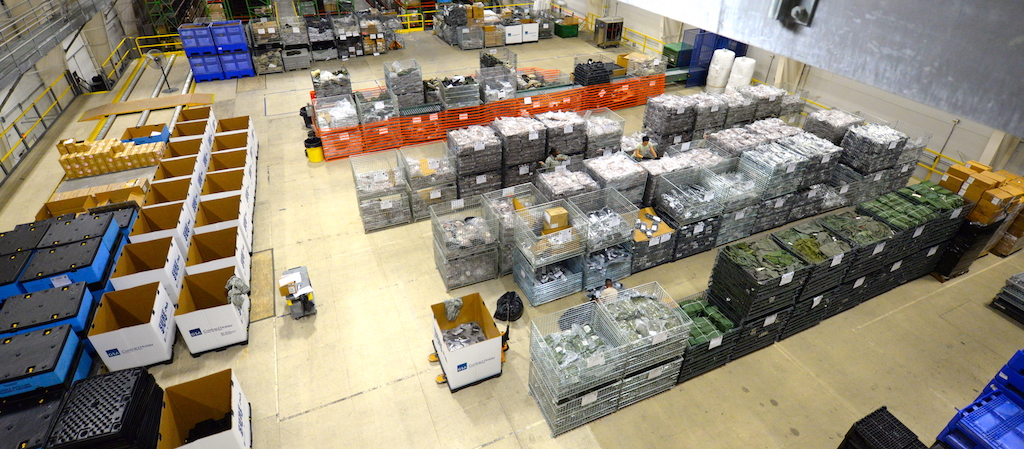Real-time locating systems (RTLS) are used to follow and track people or objects through time. RTLS are frequently employed within a pre-defined area or indoors. As opposed to GPS (which is available world-wide but not indoors) RTLS requires receivers at fixed, reference locations to be able to determine the exact location of a person or object.
A wireless RTLS transponder is attached to the person or object. In most RTLS systems the fixed receivers in known locations are used to determine the exact location of the object. Depending on the size of the area to be covered and the required precision of localisation a number of different technical approaches are possible. These also vary in the number of receivers required.
Examples of applications are the tracking of cars on the conveyor line in a factory, the ability to follow pallets with goods in storage or a distribution centre, of locating medical equipment in a hospital.
Frequently radio frequency (RF) signals are used to determine the location, but sometimes additional techniques (optical or infrared) are used to improve the precision. Transponders and the fixed reference points can be transmitters, receivers, both, or even passive transponders. A number of technical approaches are possible.
RTLS are usually local positioning systems, not GPS or mobile phone trackers. Data which is available typically do not include direction, speed or 3D orientation, although there are exceptions.
Location determination
As described above, RTLS is usually available only in a pre-defined area, such as a warehouse, distribution center, terminals of an airport, or within a building such as a factory or hospital. RTLS transponders are attached to the objects being tracked. RTLS reference points (receivers or transmitters) are placed at regular intervals in the area. The precision of the localisation improves with larger numbers of reference points, within the technical limits of the system.
Two localisation techniques are frequently employed:
Localisation at choke points
In this techique each doorway, entry or exit is covered by a receiver. Signals from an RTLS transponder, with a limited range, are received and the system knows that the object is in the vicinity of the choke point. Additional techniques, such as directional antennas, radar, or photoelectric light sensors) allow determination of the direction of the object through the chokepoint.
Localisation through relative coördinates
When RTLS receivers are placed in a regular grid of fixed reference points, techniques such as triangulation (angles of signal arrival), or trilateration (distance between the RTLS transponder and receivers) can be used to pinpoint the actual location of the RTLS transponder.
There are a number of technologies available, each with their own pro’s and con’s. The precision of the localisation is dependant upon the radio technology employed, the presence of obstructions (such as furniture or walls) and reflections (e.g. caused by metal). A precision of 90% for a range of 10 meters is pretty impressive.
Next issue
In future issues of this blog we will discuss a number of technologies for RTLS in more detail.
- Bluetooth Low Energy for choke points
- Passive RFID for choke points
- Active RFID for relative coördinates
- Ultra Wide Band for precise localisation
